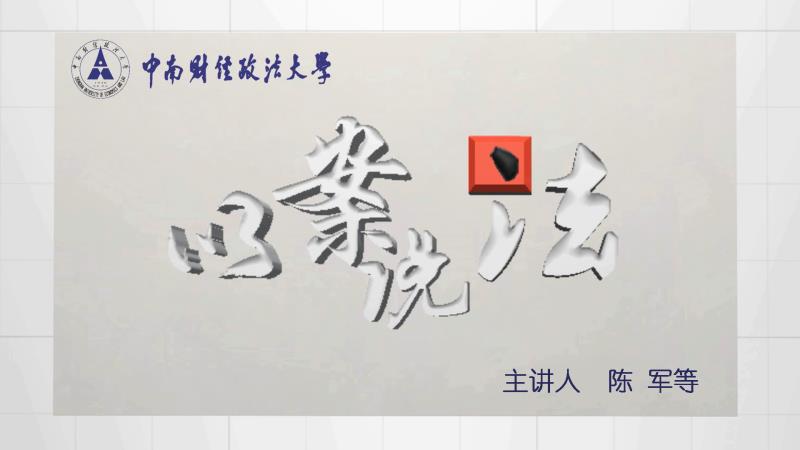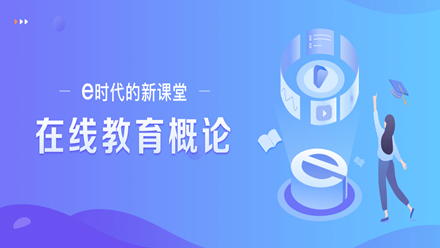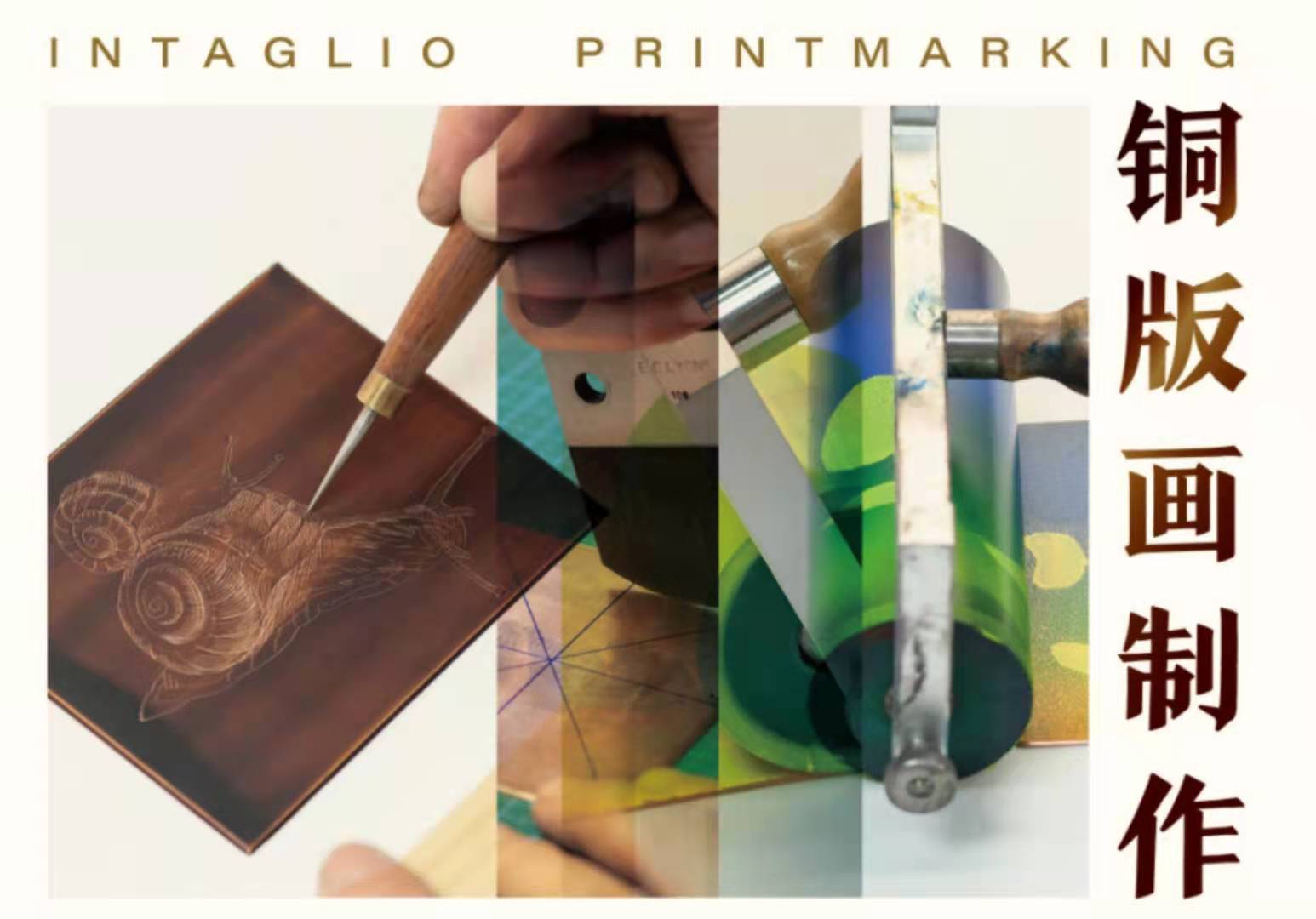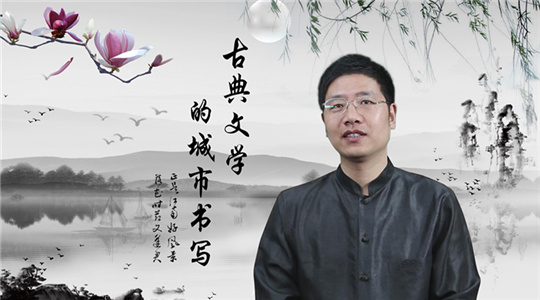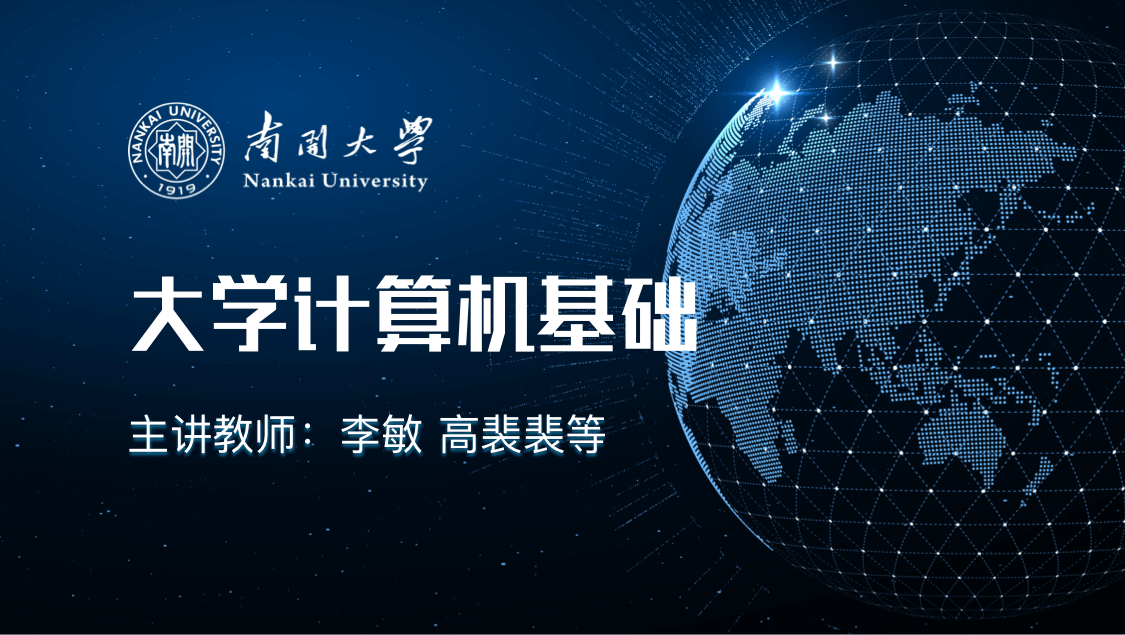
当前课程知识点:e时代的新课堂——在线教育概论 > 第五章 在线教育教学案例 > 5.1.1慕课制作与使用心得(一) > 5.1.1慕课制作与使用心得(一)
在线教育领域的各位同行
Hello, fellow teachers
大家好
from the online education industry.
我是邓俊辉
I'm Deng Junhui.
来自清华大学计算机系
I'm from Tsinghua University's Department of Computer Science and Technology.
今天非常荣幸与大家关于我们的在线教育
It's my honor to share with you my approaches to
分享一下我自己的一些做法和一些心得
and the tips I've learned from online education.
我想主要是想谈四个方面
What I want to talk about is divided into four parts.
首先我们讲一个在线教育资源
Firstly, during the whole process of creating
包括这个整个在线教育的应用的过程
and using online education resources,
第一步是筹划
the first step is planning.
什么叫筹划
What's planning?
就是说我们心目中最终的
It means we need to picture in our mind
你要完成的这样一个精品的
what this excellent online course
在线的这样一个资源
we're going to create
到底应该是什么样的
is going to be like in reality.
我想在这方面我自己的理解是
In this regard, my understanding
可能或多或少与我们大部分老师
may be somewhat different from what most teachers
最初的那种设想
imagine in the beginning,
或者我们常规的那种概念会有所区别
and my ideas about conventional concepts may also differ somewhat.
在这其中有很多
In this process,
我们认为其实非常重要的东西
there're many things we consider quite important,
可能大家往往
which many people may ignore
因为经验或者说是初次尝试的缘故
because of their experience, or the fact
可能会忽略掉
that they're trying this for the first time.
我希望我们这些工作
I hope that what we talk about here,
不管是以前的一些经验
about our experience
还是前车之鉴
and the lessons we've learned,
能够在接下来的几点中
will inspire you in my following speech,
能给大家一些提示
which consists of several tips.
这其中首当其冲的一条就是
I think the most important tip I can give you
在线教育资源完成之后
is that after you've finished creating an online course,
你的使用者是谁
you need to ask yourself:
这个问题我希望大家要首先得问自己
who are the users of my course?
甚至要反复地叩问自己
You need to ask yourself over and over again.
坦率地说
To be frank,
这一点并不是大家都能够明确的
not everyone can clearly realize that
能够在一开始就能意识到的
in the very beginning.
我自己比较得意的一条就是
What makes me proud of myself is that
在最开始我做慕课的时候
I was already pretty sure about that at the very beginning,
我很早的就把这一点给确定下来了
as I ventured on the road to making MOOCs.
因为我根据自己对我们现在国内的
Because according to my analysis of the current situation,
这种教学的现状的分析我发现
of online education in China,
我们的同学也就是在校的时候的同学
our students, who still go to school,
并不会像其他的课程一样
wouldn't pay more attention to algorithm-related online courses
更多地关注这样的一些算法类的在线课程
in the same was as they do with other courses.
而根据我的经验
According to my experience,
我们的这种学员应该更多的来自于
most of our students are those
走出大学校门之后刚刚迈入职途
who have just started their careers after graduating from university
在他的职业发展的第一个阶段第二个阶段
and are in the first or second stage
这样的一些学员
of their careers.
所以我们在设计包括后面组织这种课程
So when we designed and organized these courses,
包括这种在线资源的建设的时候
and later on created these online resources,
就非常有的放矢的针对这一条
we focused on that.
那么事实证明我们这个是做的是正确的
What we did has proven to be right.
因为从我们后面的
According to feedback
各种各样的那个反馈和统计来看
and statistics we collected,
我们的受众绝大多数
we know that most of our learners
其实从年龄比如说来看都是集中在23
are between the ages of 23,
也就走出校门到33
the age of fresh graduates, and 33.
大概这样的10年的这种范围之内
The age range is about ten years.
我想这是非常重要的
I think this is very important information,
因为这其中背后蕴含着一条道理就是
because one of the things it indicates is that
在在线教育这样一个
in online education, an education system
在时间和空间上已经有所分离
with separate times and locations between teachers and students,
你很难做到我们传统意义上的
where it's difficult to teach students
同步的这种教学环境下
in a traditional way,
你要期望某一个特定的教学资源
it's not practical to expect
能够为所有人所利用
specific instructional resources
这是不现实的
to be used by all people.
所以你必须第一条首当其冲
So, first of all,
锁定好确定好你的用户
you should target your ideal clients,
你的将来的这些受众
the viewers or students
你的学员的群体
of your courses in the future.
那么第二条
My second tip
如果是心得的话
is as follows:
我认为更重要的在于
I think what's more important
你要对你原来所甚至已经非常的熟知的
is reviewing the knowledge system
甚至已经觉得
that you're quite familiar with,
不能再熟知的那种知识体系
the one that you think
要进行重新的梳理
you can't be more familiar with.
没错 需要重新的梳理
That's right. You should review it.
为什么这么讲
Why do I say this?
因为就像我们刚才说到的那样
Like I just said,
在线的这种教学的资源
there're different ways of using
它的使用方法是不尽相同的
online instructional resources.
刚才说的受众虽然你有一定的锁定
As for the viewers I just mentioned, although you can target them,
但实际上也有很大的差异
they also have huge differences as well.
我们刚才讲的年龄
We just talked about age.
但实际上 比如从层次从地域
But actually, the students are different
它都有不同
in their levels and locations as well.
而每一个学员
And for all students,
他所进行这种相关的课程的学习
their purposes for taking certain courses
他的诉求也是不一样的
are also different.
比如对我的课程来说
Take my courses for example,
有的是中学生
some of my students are middle school students.
他可能更多的是在意说
They're more interested in knowing
我如何去通过这种学习
how to prepare
能够为他参加这种信息学的学科竞赛
for their information science contests
打下基础
when taking my courses.
也有很多学生是毕业了以后
There're also many students who have just started a new job
他刚刚就了一个职
after graduation
发现可能在能力在素质某方面可能不足
and found that they are lacking in certain abilities or qualities in some aspects.
他希望诉诸于这样的课程
They hope to improve themselves
来获得这方面的一些提高
with such courses as these.
也有一些学员
There're also some students
是在已经工作了很长时间之后
who have worked for a long time
他希望能够转换一下
and hope to make some changes.
可能要找到一个另外的一个方向
Perhaps they want to find another career path
重新去加速重新去起跑甚至是
where they can regain their rate of progress or even restart.
那么这个时候他可能也素质不一样的
Such students probably in different level as well.
那么我们刚才也讲了我们的各种的院校
As for the various schools we just talked about,
那么从他的培养目标来看
their teaching plans for their students
也是丰富多样的
also vary a lot.
所以我这里一句忠告就是
So my advice to you
大家需要耐下性子
is that you should patiently
把自己的这些
review and adjust
我们说的已经很熟悉的这些知识点
the knowledge system you're already
要重新梳理
familiar with,
使它能够成为
so that you can make it
适合于在线教育的这种特点
suitable for online education
能够更好地满足刚才说的不同的种类
and better adjusted for students
不同层次不同的方式的这种学习者
of different types, levels and learning approaches.
所以在这点上其实当然有很多可以谈
Actually, there're a lot of things we can talk about here.
我这里只讲其中的最重要的一条
But for now I'll only talk about the most important aspect:
就是碎片化
fragmentation.
这往往是我们大家在制作和完成
This is often a huge obstacle we need to overcome
这种在线资源建设的过程中的一个
when we're creating and completing
需要克服的一个大敌
online resources.
往往大家习惯了
Usually, we're used to
我们说更长时间的一个
giving a long, detailed
很详细很周密的一个论述
and elaborate speech.
而更少的忽略了
We somehow ignore
我们说某种意义上讲
and rarely receive any training
忽略了这样一种在短的时间之内
on how to describe
比如说在四五分钟之内
the causes, reasons, results
把一个问题它的来龙去脉
and other relative aspects
它的前因后果
of a problem
它的各种方面衍生的东西
within a short period of time;
尽可能的把它交代清楚的
for example,
这样的一种训练
four or five minutes.
而这方面我希望我们大家都一起来做
I hope we can try to work on this together,
相信能够把在线教育的这种资源
and I believe we can do a better job in creating
能够做得更好
online courses,
使它的利用率能够更高
so that we can improve their utilization ratio.
那么我自己的第三点
The third tip I want to share
要与大家分享的心得就是
with all of you is this:
在我们包括慕课在内的
when preparing for and creating online education resources,
这些在线教育资源的准备和制作的过程中
such as MOOCs,
你未必要过于的在乎它的形式
you don't necessarily have to worry about the form they're delivered in.
因为我们知道
As we know,
教书包括讲课固然有表演的成分
although performance is a part of teaching and lecturing,
但是它并不等同于我们说的演艺
teaching and lecturing aren't all about performance.
你是老师不是演员
You're a teacher, not an actor or actress.
我希望大家能够记住这一条
I hope you will keep that in mind.
所以我们有些比如说
For example, some of us pay
过于看重这种什么画面的唯美
too much attention to the aesthetics
这种镜头的完善
or perfection of a particular section of our teaching.
包括对一些我们说必要的一些瑕疵
Some of us are against those necessary imperfections,
甚至是一些实际上是微不足道的一些问题
those essentially trivial problems,
甚至是很有必要的一些过门
and even those
你会去排斥
necessary interludes.
我们觉得这个都某种意义上是不妥的
We consider them somewhat inappropriate.
从我个人认为最重要的是要简洁实用
In my opinion, conciseness and practicality are the keys to effective teaching.
这是我们的上上策
That's our best tactic.
在这个基础上
Only with that in mind
你才谈得上刚才我们说的
can we move on to make our videos as eye-catching
各种尽可能去美化
as possible, like we just said.
那么对于整个的课程风格来说
As for the general style of a course,
我们想演员和观众之间的关系
we think that the relation between performers and viewers
也不能照搬到老师和学生之间关系来
aren't the same as that between teachers and students.
我们说更重要的是
The more important thing
你要营造一种亲切感
is to create a cozy, friendly
一种自然的感觉
and natural atmosphere,
使得学生不会对你产生一种距离感
so that your students will feel close to you.
我们知道有一句话叫做
There's a saying that goes:
亲其师才能信其道
Students can only trust their teachers when they feel close to them.
如果学生跟你有一种
If your students feel that
不光是隔着这个慕课的屏幕
you're not only teaching an MOOC on the screen,
而且他多少觉得你好像不是在对他讲课
but also performing
你是在那演艺
instead of lecturing them,
那么我们很难相信这个学生
then I believe that your students
能真正地信你的道
will find it difficult to believe in what you're saying.
所以我的奉劝说
So, according to my experience,
也是我自己的一个心得是说
I advise that
我们需要简洁实用为上
we first give priority to conciseness and practicality,
要质朴 自然 亲切为本
and focus on a plain, natural and friendly atmosphere.
在慕课或者在线资源的拍摄和制作方面
During the process of filming and producing MOOCs or other online courses,
如何来体现我们刚才讲的这种
how do we achieve the conciseness and practicality
所谓的叫实用简洁为上
we just talked about?
我自己认为我们很多传统的方式
In my opinion, we can still use many traditional approaches
其实依然可以搬到这个课堂上来
in our classes.
比如说我注意到
For example, I've noticed
我们很多同行现在非常排斥板书
that many of our fellow teachers are somewhat against chalkboard writing.
但是我也知道
But I'm also happy and relieved
也很高兴很欣慰的看到有我的很多同事
to see that many of my colleagues
他们就基本上完全依靠板书
almost completely depend on chalkboard writing.
没错 就是一块黑板一支粉笔
That's right. With only a chalkboard and a piece of chalk,
照样可以讲出非常精彩的慕课
they can give amazing MOOC lectures
制作出非常精彩的在线教育资源
and create awesome online education resources.
那么在我的这个做的过程中
When I create online courses,
某种意义上讲我是取了折中
I make a compromise in some sense.
大家可以去翻看我的慕课你会发现
If you watch my MOOCs, you'll find
我有人像这样的一种讲解
that I teach through both lecturing,
就像现在
like what I'm doing right now,
也有一些板书
and chalkboard writing.
甚至有这种我们说基于一些技术
There's even a combination of[virtual] virtual and reality
能做到的所谓的虚实结合
based on some technologies.
我可以使人和我的讲稿
I can combine myself and my speech drafts;
使我的指头和我的笔
I can combine my fingers, my pens,
以及我讲稿中的某一个部件
and a certain part of my speech drafts
能够直接地融为一体
in a direct way.
使得它能够直接的能够交互
Using this method, I can make my courses interactive.
所以这就是我讲的叫做简洁实用为上
So that's what I mean by "first give priority to conciseness and practicality."
因为据我所知
Because as far as I am aware,
一个特别漂亮的这样的一个讲稿
although a flamboyant speech
其实虽然会给学生
does seem refreshing to students
第一眼耳目一新的感觉
in the beginning,
但是它其实很快就会形成一种
it will soon trigger
所谓叫做疲劳感
A weariness
审美疲劳
They'll get bored about how wonderful your speeches are.
而反过来
On the other hand,
如果一个老师能够借助这种板书
if a teacher is able to use blackboard or whiteboard writing,
包括这种传统这种形式
along with other traditional approaches,
对它针对一些这种知识点
to thoroughly explain some
从头到尾原原本本地娓娓道来
knowledge points,
其实这样就会给他增加
it will create a[建议删除]
某一些待会我们要提到的那种亲切感
intimacy atmosphere[intimacy], which we'll talk about later.
那么作为老师在拍摄的过程中
During the filming process,
也会碰到很多很具体的一些问题
teachers will come across many specific problems.
比如说你的语言的组织问题
Take discourse management for example.
在这方面我的经验是
From my experience,
或许你不用太在意你的语言
it might not be necessary to pay too much attention to the way you speak.
我一般的讲法是这样
My way of lecturing is like this:
我的每一次这个课程
During each lesson,
不管是45分钟的还是一个小时的
whether it takes 45 minutes or an hour,
甚至两个小时的
or even two hours,
我一般都会把它凝缩为一个卡片
I will [是否需要加上"will"]try to sum it up on a card.
比如说我这次案例的分享
For example, during the lesson where I share my case study experience,
我要给诸位介绍的很多很多东西
I talk about a lot of things.
虽然好像不少
Despite the large amount of knowledge points,
但实际上在我的脑子里头
they're all actually summed up on a card
只有这么一张卡片
that I've memorized in my brain.
大家可以去翻看我原来慕课的那个日志
You can check the journal of my previous MOOCs.
基本上每一天的课程就是一张纸
Basically, a day's lessons are condensed into one piece of paper.
所有的台词
As for all my lines,
你脑子里如果有了这个提纲
if I have an outline in my head,
这个台词是呼之即出的
it's easy for me to come up with the lines.
是水到渠成的
They'll come to my mind naturally.
你如果反过来
On the other hand,
我也知道确实有一些同行是这么做的
there's an opposite approach that some of my fellow teachers use, which I'm aware of.
但是我个人认为这样其实
I personally think it may have
会有所谓的事倍功半的这种不好的效果
an adverse effect that gives them half the results with double the effort.
他们的做法就是
Their approach is caring
过于在乎他的每一句话是怎么说的
too much about the way they say each sentence.
特别在意这个什么
They pay too much attention
所谓的起承转合是怎么怎么样的
to how they connect different parts of a speech.
我自己认为这个可能会有点
In my opinion, in a serious sense,
我们说的严重一点的话叫做舍本逐末
that approach is just grasping the shadow and letting go of the substance.
就是你真的给学生讲的东西
In fact, what you're really teaching your students,
学生能听懂的东西
which your students can grasp,
实际上是你的概念是你的思路
are your notions and thoughts.
你的话语虽然很重要
Although the way you speak is important,
但是偶尔有一些磕巴
some stutters at times,
有一些甚至是颠覆性的一些错误
and even some astonishing errors,
没有关系
are actually no big deal.
把它保留下来好了
It's fine to keep them in.
因为它就是你共同思考
Because they're part of the normal process
共同探讨收到的一个正常的过程
of your mutual thinking and mutual discussion.
-混合式教学该怎么做?与清华老师一起聊聊
-看清华老师如何进行大班混合式教学
--Video
-如何做好混合式课堂的互动
--Video
-与清华大学老师聊聊慕课独特的教学设计
-“挑战60s”授课短视频大赛
--Video
-与清华大学老师聊聊慕课的制作与运营
--Video
-1.1在线教育发展现状
--html
-1.1.1在线教育带来了e时代的新课堂
-1.1.2师生说
--1.1.2师生说
-1.1.3我国在线教育的特点
-1.2什么是在线教育
--html
-1.2.1概念解析
-1.2.2教育的技术发展史
-1.2.3在线教育的五要素模型
-1.3在线教育对教师的机遇与挑战
--html
-1.3.1机遇篇
--1.3.1机遇篇
-1.3.2挑战篇
--1.3.2挑战篇
-1.4在线教育发展的历史
--html
-1.4.1二十世纪的发展
-1.4.2二十一世纪的发展
-1.4.3在线课程三要素
-1.4.4虚拟教育组织
-1.5课程内部体系和外部关系
-第一章 解读在线教育--单元习题
-讨论题
-2.1数字时代带来教育变革
-2.2在线教育更适应学生的学习需求
--html
-2.2.1教育需求的发展
-2.2.2学习风格与学习类型
-2.2.3多模态数据分析学生学习行为与需求
-2.2.4教育目标
-2.2.5拓展学习时空,促进深度学习
-2.2.6自主学习系统的案例分享
-2.3在线教育帮助教师成长
-2.4学校和国家为什么要做在线教育
-单元习题--作业
-3.1高等学校在线教育发展
-3.1.1学校现状
-3.1.2平台与联盟
-3.2不同类型的教师都能得益于混合式教学
-3.3混合式教学的好处
-3.3.1当前的教学问题
-3.3.2教师和学生的收益
-3.4混合式教学的关键细节与常见误解
-3.4.1关键细节一
-3.4.2关键细节二
-3.4.3关键细节三
-3.4.4误解篇一
-3.4.5误解篇二
-3.5智慧教学工具的发展
-3.5.1综述篇
--3.5.1综述篇
-3.5.2雨课堂的诞生
-3.5.3雨课堂的功能
-3.5.4课堂教学需要雨课堂
-3.5.5雨课堂解决面授时间紧张的问题
-3.5.6雨课堂解决课前课中课后的学习效果问题
-3.5.7课前课中课后雨课件设计要点
-第三章 高校在线教育进行时--单元习题
-讨论题
-讨论题
-4.1教育实践的展望(一) 教育创新
-4.2教育实践的创新(二) 教育技术与决策
-4.3教育理论的热点趋势
-第四章 在线教育的未来--单元习题
-讨论题
-5.1邓俊辉老师《数据结构》与《计算几何》教学案例
--html
-5.1.1慕课制作与使用心得(一)
-5.1.2慕课制作与使用心得(二)
-5.2张瑜老师《思想道德修养与法律基础》教学案例
--html
-5.2.1教学理念与混合式教学的主要环节
--Video
-5.2.2章节实例
-5.3杨芳老师《大学英语》教学案例
--html
-5.3.1混合式教学设计心得
-5.3.2 University单元教学设计
-5.4于歆杰老师《电路原理》教学案例
--html
-5.4.1小容量班级完全翻转课堂
-5.4.2大容量班级部分翻转课堂
-5.5郑莉老师《C++语言》教学案例 雨课件样例及校内教学心得分享
--Video
-单元习题--作业
